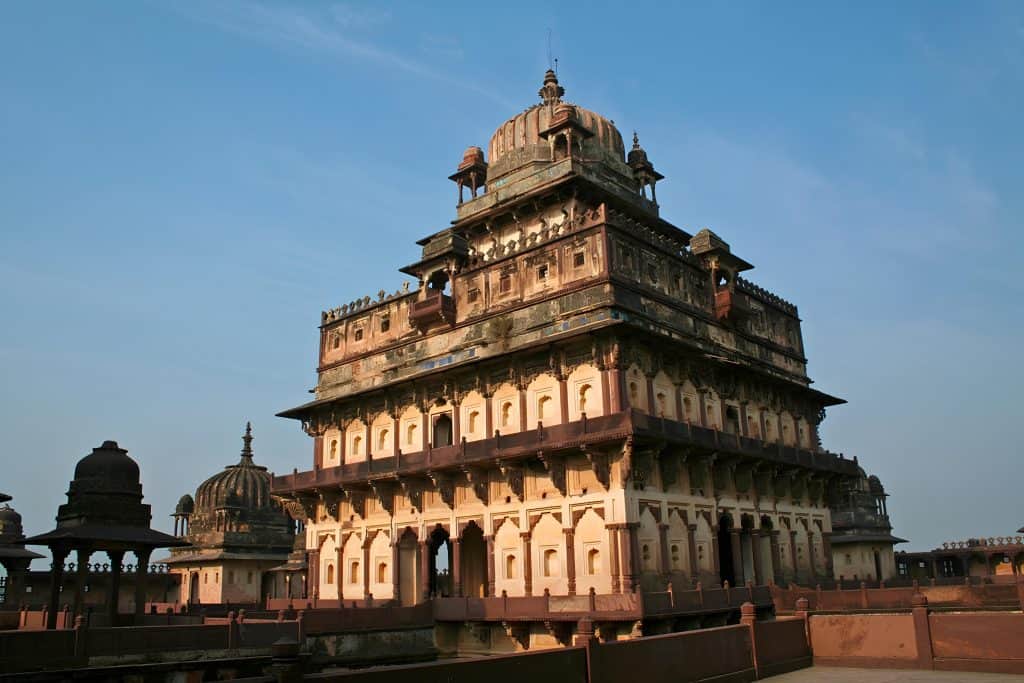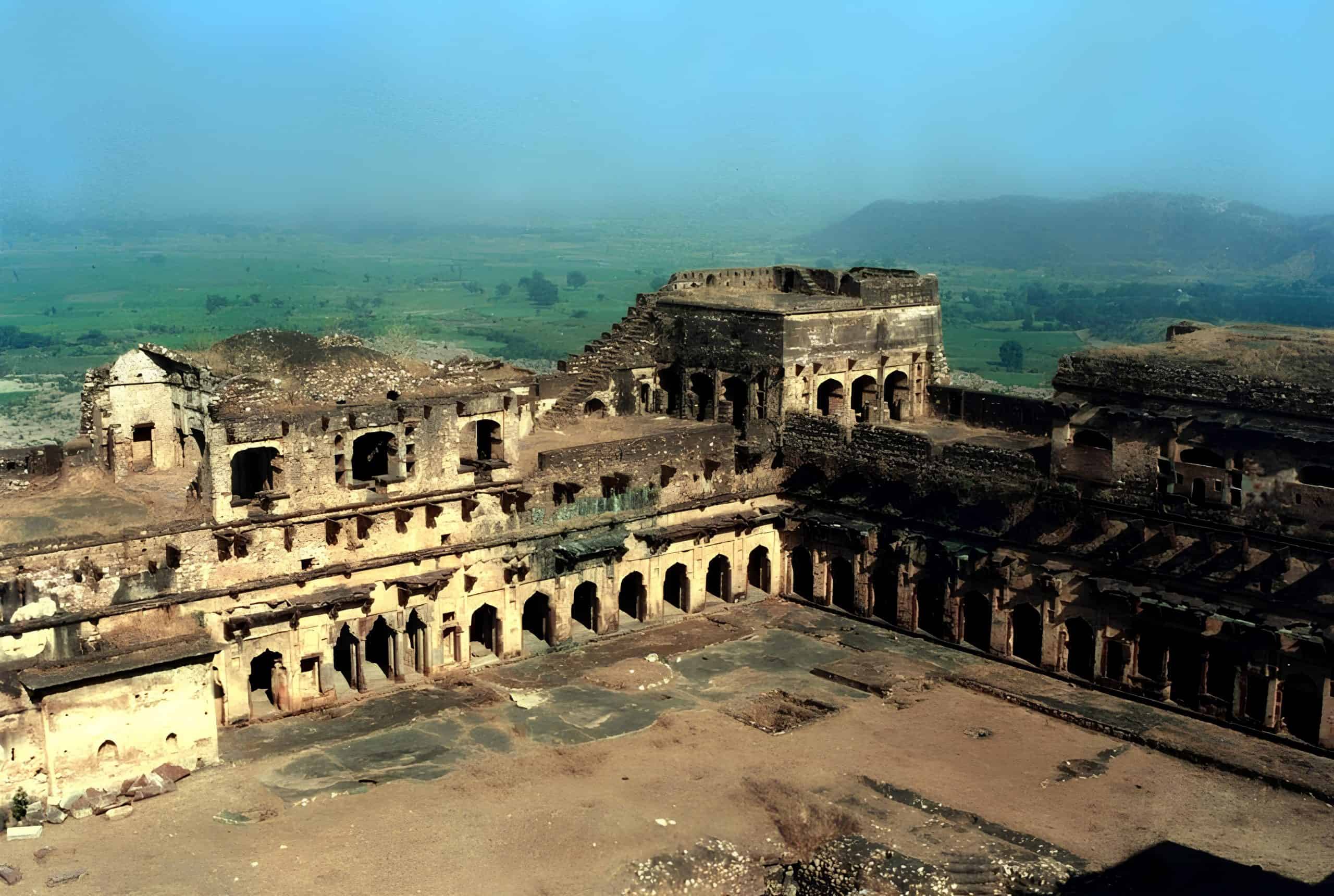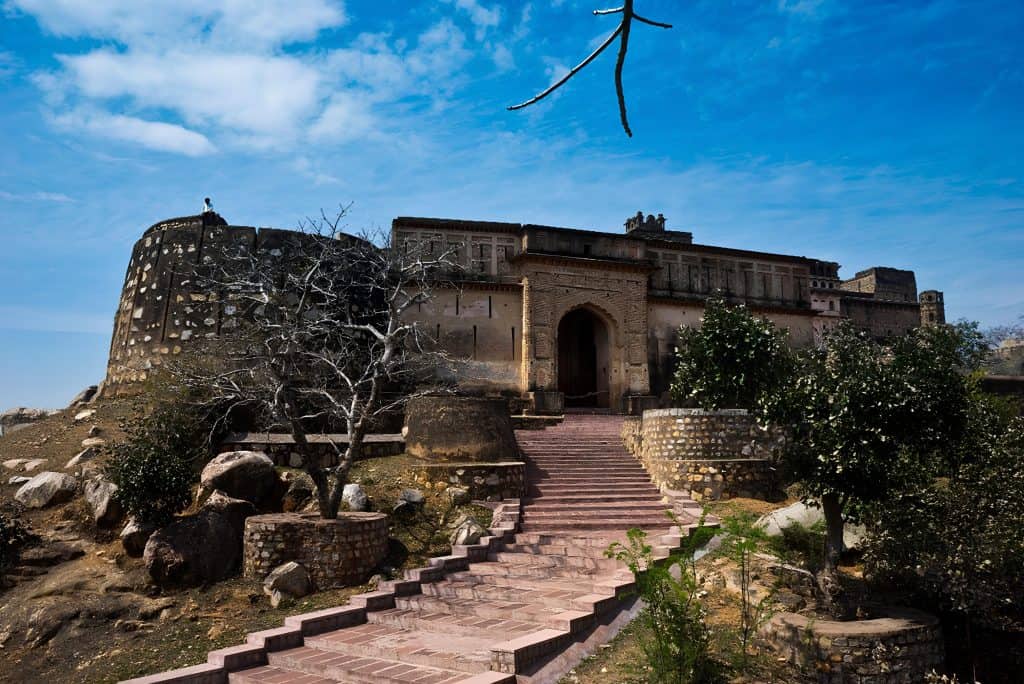A forgotten architectural masterpiece, Datia Palace stands regal and untouched, is now a UNESCO treasure in Madhya Pradesh.

In the heart of Madhya Pradesh, where the past whispers through stone corridors and the wind carries legends across the plains, rises the enchanting Datia Palace — a forgotten dream in sandstone and lime, now rediscovered by time. Also known as Bir Singh Palace, Satkhanda Mahal, Govind Mahal, and Purana Mahal, this monumental structure perches on a rugged hillock in the town of Datia — its silhouette a silent ode to friendship, royalty, and architectural brilliance. With its recent inclusion in the UNESCO Tentative List of World Heritage Sites, this palace is no longer just a relic of history — it is a crown jewel in the living museum of Madhya Pradesh.
A Monument of Loyalty

Commissioned in 1614 by Raja Bir Singh Deo of Orchha — a fearless Bundela warrior and an aesthete king — the palace was built in honor of his dearest friend, Prince Salim, who would later ascend the Mughal throne as Emperor Jahangir. Their bond, born amidst political turbulence, was strengthened when Bir Singh Deo stood beside Salim in his battle against Emperor Akbar. And so, the palace was not just a royal abode, but a monument to loyalty. But fate, ever whimsical, had other plans. Neither the emperor nor the king ever lived in it. Jahangir, gracious yet distant, declined the invitation — and the palace, grand and glowing, remained uninhabited, its rooms echoing with the footsteps that never came.
Today, the palace stands still and sublime — a silent sentinel of history with nearly 400 rooms decorated with delicate frescoes, Mughal arches, Rajput jharokhas, and intricate spandrels painted with horses, deities, and courtly scenes. Its symmetrical layout, said to resemble the sacred swastik, speaks of sacred geometry and sovereign intent. Locals refer to it as Bhool Bhulaiya, thanks to the maze hidden within — now closed to preserve its secrets.
The grandeur of this place once dazzled British eyes — Lord Hastings visited in 1818 and Viceroy Lord Curzon held court here in 1902. Sir Edward Lutyens, architect of New Delhi, is believed to have drawn inspiration from its sculptural precision for the capital’s famed North and South Blocks.
“Madhya Pradesh offers diverse and unique destinations to each traveler,” says Shri Sheo Shekhar Shukla, Managing Director, Madhya Pradesh Tourism Board and Principal Secretary, Tourism, Culture, and Religious Trusts & Endowments Department. “Travelers undoubtedly find rest and renewal in the state’s Offbeat Multispecialty Destinations. The breathtaking state, which is appropriately referred to as the Heart of Incredible India, is consistently the ideal fusion of architectural splendor, unexplored landscapes, tranquil scenery, and customs. The state is a fantastic tourism destination for travellers from both local and foreign countries.”
A Journey Through Spiritual and Cultural Echoes

Datia is more than a palace paused in time, it is a living canvas of spirituality, heritage, and hidden charm. Start your journey just 2 km away at Shri Pitambara Peeth, a revered Shaktipeeth dedicated to Goddess Baglamukhi. Wrapped in incense and sacred chants, the temple exudes a mystic calm that draws devotees and seekers alike. Then, travel 28 km to Orchha, the erstwhile capital of Raja Bir Singh Deo.
With its majestic cenotaphs, temples, and riverside palaces, Orchha echoes the artistic legacy of the Bundela rulers. On your return, pause at Rajgarh Palace, 12 km from Datia, a lesser-known architectural jewel. Its quiet corridors and graceful arches offer a more intimate look into Bundeli grandeur — a perfect conclusion to your cultural sojourn.
How to Reach Datia:
By Air: The nearest airport is Gwalior (40 km), well connected with regular taxis and buses to Datia.
By Rail: Datia Railway Station, located on the Delhi–Chennai route, connects seamlessly to major cities like Gwalior, Jhansi, Agra, and Bhopal.
By Road: On NH-44, Datia is easily accessible from Bhopal, Gwalior, and Jhansi via comfortable bus and taxi services.
Best Time to Visit: Between August and April, when the weather is soft and the stone walls breathe warmth under the sun and starlight.
Datia is not merely a destination, it is a fable waiting to be heard, a palace waiting to be felt, and a town that cradles timelessness in its arms. Here, history is not locked in glass cases but lingers in the airm in the silence of abandoned halls, in the glow of temple flames, and in the stories still told under village skies. Come, and lose yourself in the mystery, majesty, and magic of Datia, the beating heart of Incredible Madhya Pradesh.
Read more – Discover Your India

